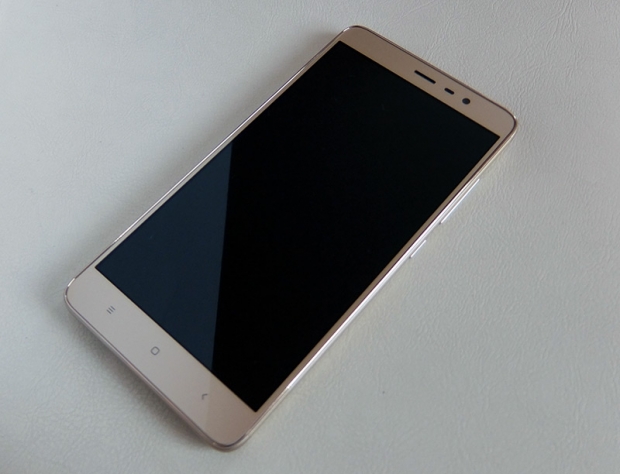Index
Xiaomi Redmi Note 3 Specs and Performance
This feels like a repeat of our Redmi Note 2 review, so we’ll just paste the same spec sheet and tweak it a bit. Both phones are based on MediaTek’s latest Helio X10 mainstream processor, but while the Note 3 maxes out at 2GHz, the Prime version of the Note 2 can hit 2.2GHz.
In our Redmi Note 2 review, we concluded that the extra 200MHz probably isn’t worth it, and it seems like Xiaomi’s decision to keep the processor at 2GHz has vindicated us. Moreover, Xiaomi appear to have bumped the GPU clock to 700MHz, which should deliver a nice performance boost in 3D applications.
These aren’t not the only differences, so let’s take a closer look at the specs.
Xiaomi Redmi Note 3 specs:
- SoC: MediaTek Helio X10 (MT6795M), 28nm
- CPU: Eight Cortex-A53 cores up to 2GHz
- GPU: Imagination Technologies PowerVR G6200 GPU up to 700MHz
- RAM: 2GB LPDDR3 933MHz (3GB on 32GB model)
- Storage: 16GB/32GB eMMC 5.0 internal storage (single partition), non-expandable
- Display: 5.5-inch 1080p IPS panel
- OS: Android 5.0.2 / MIUI 7
- Rear camera: 13-megapixel Samsung sensor, f/2.2 aperture, PDAF, 78 degree lens
- Front facing camera: 5-megapixel Omnivision OV5670 sensor, f/2.0 aperture, 85 degree lens.
- Battery: 4000mAh lithium polymer, non-removable
- Dimensions: 150 x 76 x 8.65mm (Redmi Note 2: 152 x 76 x 8.3mm)
- Weight: 164g (Redmi Note 2: 160g)
- WiFi and Bluetooth: 802.11b/g/n/ac WiFi and Bluetooth 4.0
- Sensors: ambient light, direction, accelerometer, compass, proximity, GPS, A-GPS
- Other noteworthy features: IR blaster
- SIM card: dual SIM (micro SIM), dual standby
- Network support:
2G: GSM 900/1800/1900MHz
3G: WCDMA 850/900/1900/2100MHz
4G: FDD-LTE: 1800/2100/2600MHz, TDD-LTE: B38 / B39 / B40 / B41 (Make sure to check regional compatibility prior to making a purchase)
So what’s different? For starters, the Note 3 feels a bit smaller. The Note 2 is 2mm taller, but it’s also 0.3mm slimmer. However, thanks to the curved design, the Note 3 doesn’t look or feel thicker. It also looks even shorter, and the weight difference is negligible. When we factor in the extra battery capacity, all we can say is kudos to Xiaomi designers and engineers.
It’s not all good news. While you get 3GB of RAM on the 32GB version, the 16GB version ships with 2GB of RAM. That’s not a deal breaker in this price category, but the fact that there’s no microSD slot is a big deal. With no expandable storage, it’s obvious that the 32GB model is the one most people will go for. It’s not expensive, but if you compare the entry-level 16GB Redmi Note 2 to the 32GB Redmi Note 3, the price gap widens to about $50. Bear in mind that you still get the same processor and camera on both devices (not to mention loads of other bits).
In Antutu, the Note 3 ends up marginally slower than the Note 2.
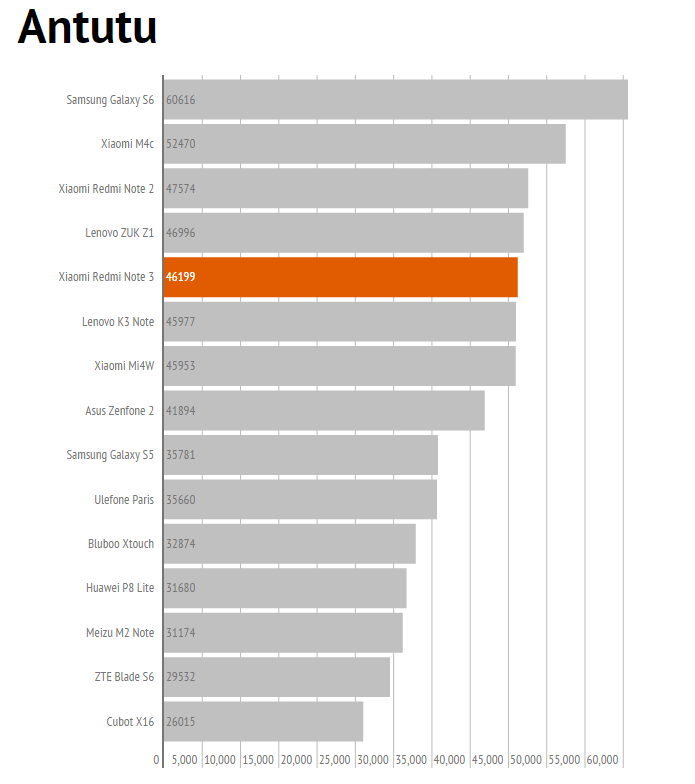
We see the same thing in Basemark OS II and Geekbench Single Core.
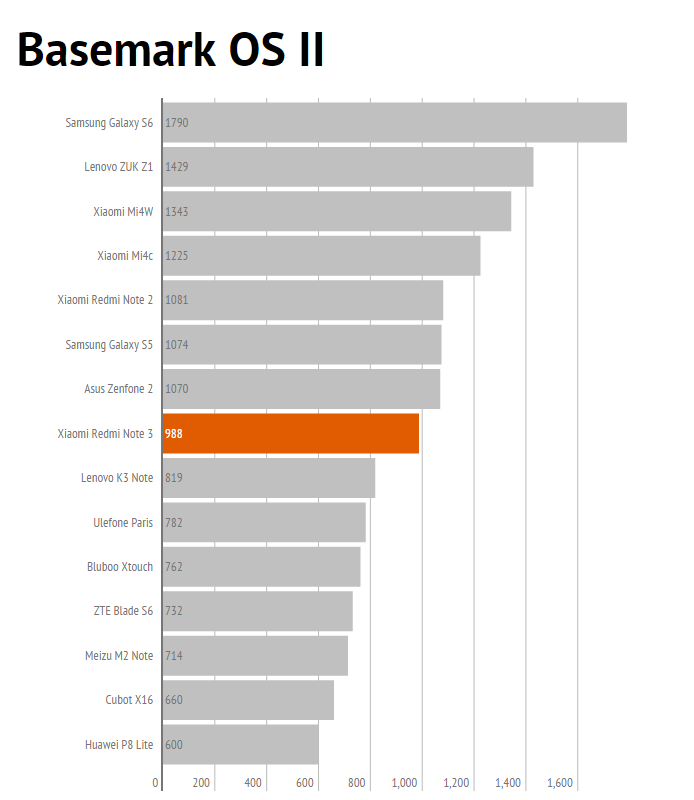
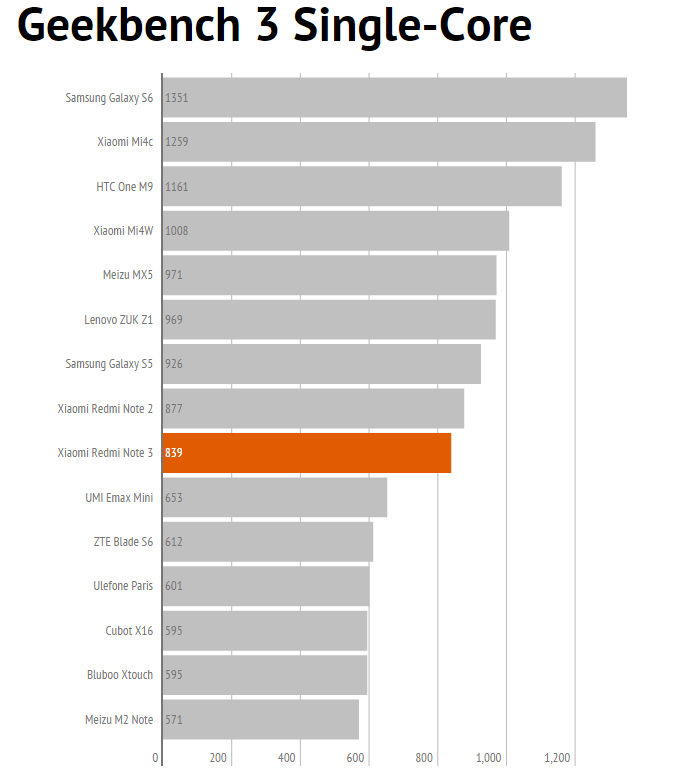
However, in Geekbench Multi Core, the Note 3 ends up with a better score, outperforming the Note 2, as well as phones based on Snapdragon 808 and 801 processors.
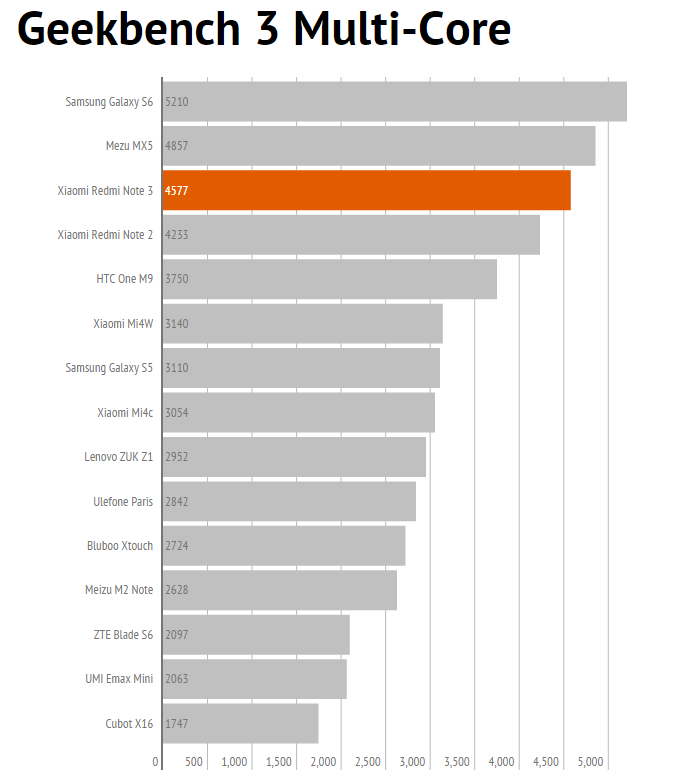
The Redmi Note 3 outperforms the Redmi Note 2 in 3Dmark. While the CPU clock is the same as the plain Note 2, the GPU clock appears to have ended up with a small clock bump. The end result is superior GPU performance. The caveat is that the Redmi Note 2 32GB version ships with a 2.2GHz version of the same chip, with the same GPU clock as the Redmi 3.
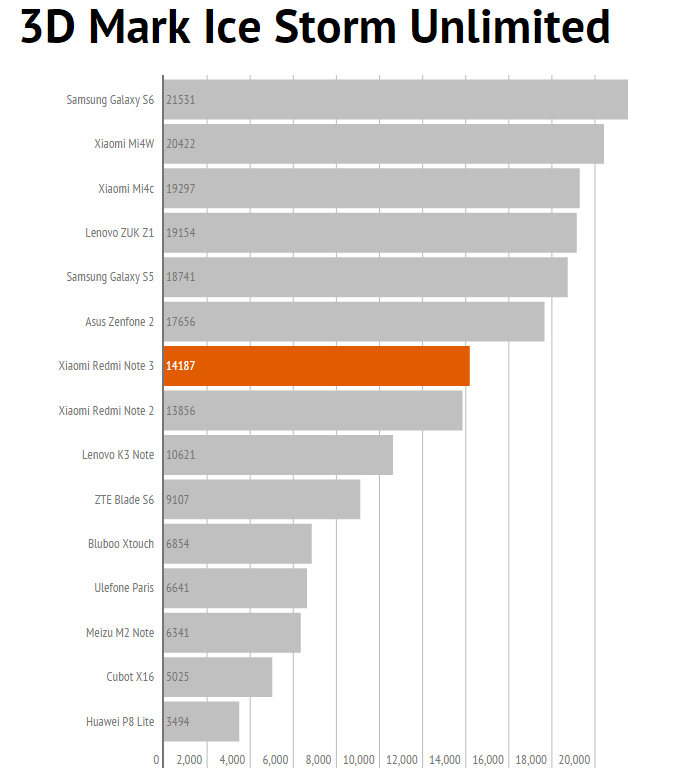
Oh the whole, the results are very close to the Redmi Note 2, which even ends up somewhat faster in certain benchmarks. The Note 3 appears to do better in GPU and multithreaded tests. Unfortunately we did not get a chance to try out the 3GB version, which could provide superior performance in some scenarios. However, at the end of the day, the performance difference between these two devices is negligible.
With a 4000mAh battery and a great speaker, the Redmi Note 3 sounds like a good choice for gamers, but it really depends on the genre. The GPU is not on a par with flagship phones, but it can still deal with most titles effectively.
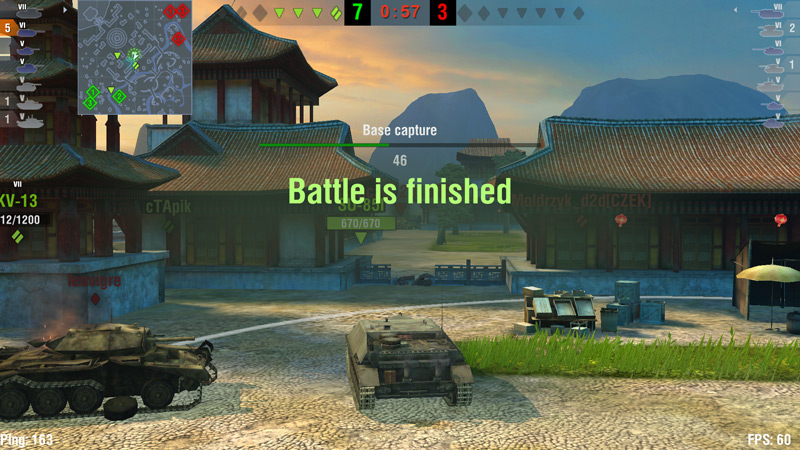
For example, in World of Tanks Blitz, we got 45-60FPS on high detail settings. We also got five clean kills with our 88.

